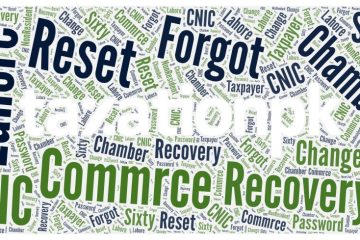When it comes to tax purposes, understanding the concept of profit on debt is essential for individuals and businesses alike. In this informative blog post, we will delve into the concept of profit on debt, its significance in taxation, and provide comprehensive explanations, types, and examples to help you grasp this concept better. Whether you are a taxpayer, a financial professional, or simply curious about tax matters, this post will shed light on profit on debt and its implications.
Defining Profit on Debt:
Profit on debt refers to the interest income earned by a taxpayer from lending money or investing in debt instruments. It is a taxable form of income that falls under the purview of tax regulations. Profit on debt is considered a separate category from other forms of income, such as business profits or capital gains.
WHT Tax Rates for 2025 on National Savings Certificates
Regular Income Certificates (RICs)
- Tax:
- Filers: 15% withholding tax on yield/profit.
- Non-filers: 35% withholding tax on yield/profit.
- Zakat: Exempt.
Behbood Savings Certificates (BSCs)
- Tax: No withholding tax on profit.
- Zakat: Exempt.
Defence Savings Certificates (DSCs)
- Tax:
- Filers: 15% withholding tax on yield/profit.
- Non-filers: 35% withholding tax on yield/profit.
- Zakat: Deducted at source as per rules.
Special Savings Certificates (Registered)
- Tax:
- Filers: 15% withholding tax on yield/profit.
- Non-filers: 35% withholding tax on yield/profit.
- Zakat: Collected at source as per rules.
Withholding Tax on Profit on Debt for Tax Year 2025
Profit on Debt with Banking Companies or Financial Institutions
- Tax Rate: 15% for filers, 35% for non-filers.
Profit on Government Securities
- Tax Rate: 15% for filers, 35% for non-filers.
Profit on Bonds, Certificates, Debentures, etc.
- Tax Rate: 15% for filers, 35% for non-filers.
Profit on Sukuk
- Companies: 25% for filers, 50% for non-filers.
- Individuals and AOPs (Profit > Rs. 1 million): 12.5% for filers, 25% for non-filers.
- Individuals and AOPs (Profit < Rs. 1 million): 10% for filers, 20% for non-filers.
Note: AOP stands for Association of Persons.
Withholding Tax on Profit on Debt for Tax Year 2024
Tax Rates for filer were same (as above) in TY 2024.However for Non-Filers it was 30%
Reduced Rates on Profit on Debt
As per Second Schedule, Part II of the Income Tax Ordinance, which outlines specific tax rates for certain income types.
Reduced rate will be applicable provided:
- Taxable Income: Profit on debt from a debt instrument.
- Debt Instrument: Issued by the Federal Government under the Public Debt Act, 1944 or its wholly owned special purpose company.
- Investor: A resident citizen of Pakistan.
- Condition: The investor must have already declared their foreign assets through a Foreign Currency Value Account (FCVA) maintained with an authorized bank in Pakistan.
- Final Tax: The 10% tax deducted is considered the final tax, meaning no further tax is payable on this income.
-
Tax Rate: A 10% tax is imposed.
Final Tax Treatment:
- In case tax is not deducted or less deducted the taxpayer is liable to the the tax due by his/herself.
- Like in case of Behbood Savings Tax will not be withheld at source.
- In case of securities issued by SBP tax rate will be 10% (Final)
- Where profit on debt is above 5 million it will be taxed as per Business Tax Rates.
Importance of Reporting Profit on Debt:
Accurate reporting of profit on debt is crucial to comply with tax laws and fulfill your tax obligations. Failure to report this income may result in penalties or legal consequences. Ensure that you maintain proper records of interest received, bond transactions, and other relevant documentation to support your tax reporting.







